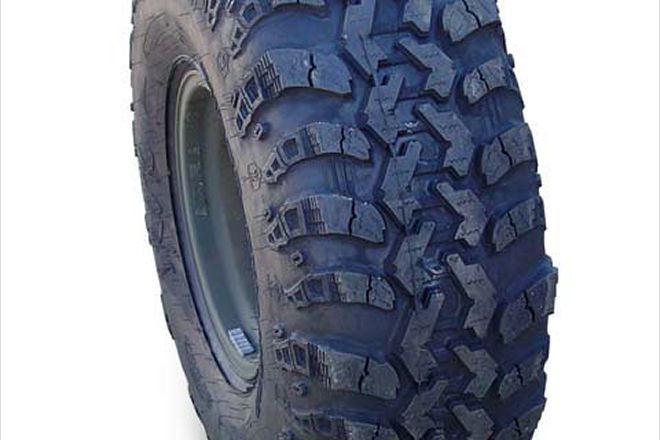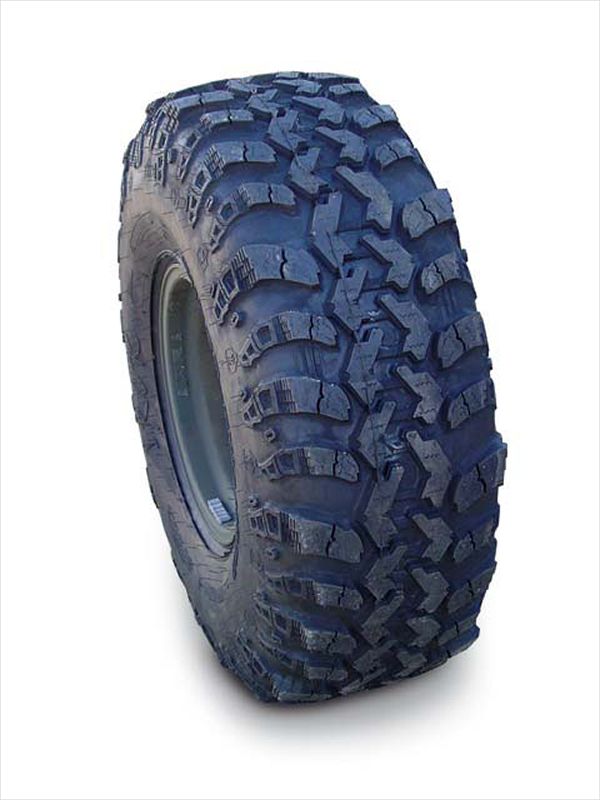

Don't think that you're reading last year's issue again, where we found the Swamper IROK to be one of the best overall tires we've ever come across for use on a light trail vehicle. We repeat, this is not a repeat. If you look at the picture, you'll notice a flat tread rather than the very rounded carcass of the IROK bias-belted tire. Depending on your intended use, this may be a good sign.
When we tested the bias IROK, it was a prototype, not necessarily slated for production. Luckily, the powers at Interco decided to add it to the extensive Super Swamper line, which already included the radial. Compared to the bias-belted tire of the same nominal size, the radial is 0.2 inch shorter (radials can't grow in diameter, regardless of inflation pressure or grooving) and 1 inch narrower (bias tires are more rounded, like an innertube, while radials tend to be more square in shape). Tread width is within a quarter inch between the two, and the tread depth is the same. Since the tread pattern is also the same, one could then expect the two to perform similarly, right? Not exactly.
As we've pointed out so many times in the past, a bias tire will generally outdo a radial in the dirt because of its inherent conformability, allowing the tread to get better traction. On the other hand, a radial will nearly always be far better on the street because of the much-more-stable tread area, delivering improved handling, wear, and longevity. While the two IROKs are virtually identical visually (except for the telltale tread arch), they are of two very different types-radial and bias-belted construction. One instant clue is that the radial is 14 pounds heavier, at 81 pounds.
Realistically, the radial IROK should be even quieter than the bias-belted tire, but we used a different test vehicle this time and cannot say for sure. There was, predictably, less rolling resistance and the tire was more stable, giving better handling. While not noticeable in our vehicle, averaging 31 pounds of Road Force Variation, the radial IROKs weren't as round and true as the bias version we tried last year, where the two worst bias-belted ones were at only 21 pounds.
For a light weekend warrior that needs the increased contact pressure of the IROK's tread, and is driven more than just to and from the trail, the radial version is a viable alternative. Ditto if the vehicle is flat-towed. Keep in mind that three polyester plies aren't as good at fending off evil rocks and branches as is the four-ply nylon sidewall of the bias-belted IROK, and that tread area isn't as conformable. Still, the radial IROK performed admirably in the dirt, thanks to the tread design, but obviously not quite as well as the far more pliable and rounded bias-belted IROK.
There are already many IROKs being worn out in pavement-only use, so if you like the looks of the IROK, but don't need its full trail performance potential, by all means get the radial. It'll work better on the street. Those of you who don't care much about the added rolling resistance and accelerated tread wear on pavement, but do appreciate the advantages of a bias tire, should take a look at the bias-belted version.
Tire: Interco Super Swamper IROK
Size: 36x13.50R15LT
Type: Radial
Load range: C
Max load (lb. @ psi): 2,810 @ 35
Sidewall: 3-ply polyester
Tread: 3-ply polyester, 2-ply steel, 1-ply nylon
Approved rim width (in.): 10
Tread depth (in.): 21/32
Tread width (in.): 11.0
Section width (in.): 13.5
Overall diameter (in.): 36.0
Static loaded radius (in.): 16.5
Revs per mile: 602
Weight (lb.): 81 (freight)